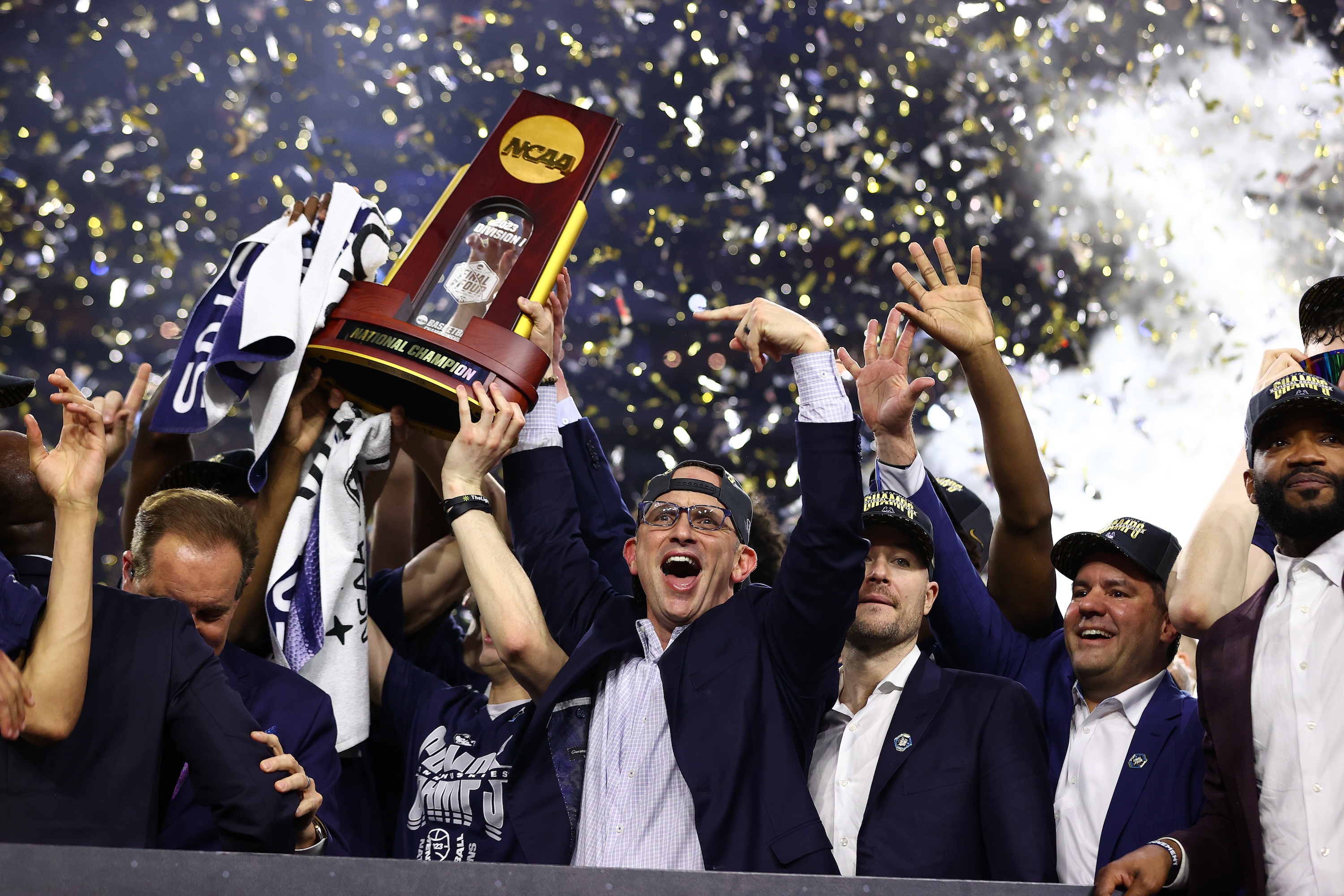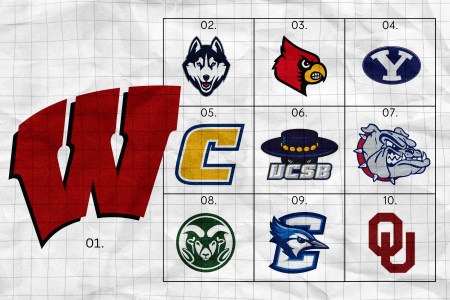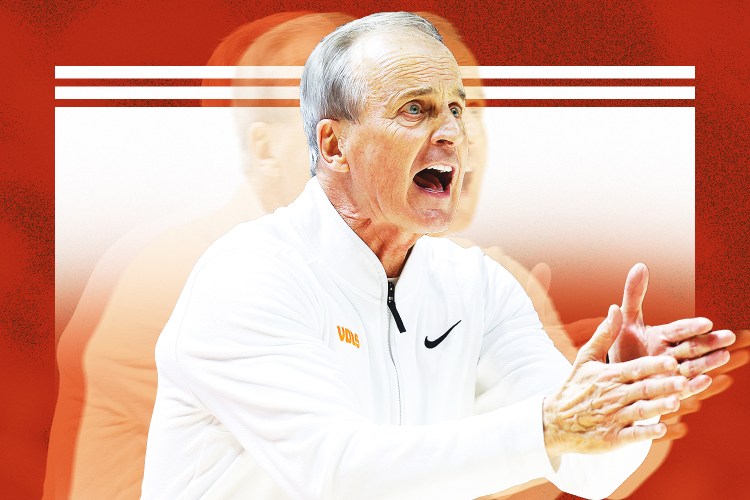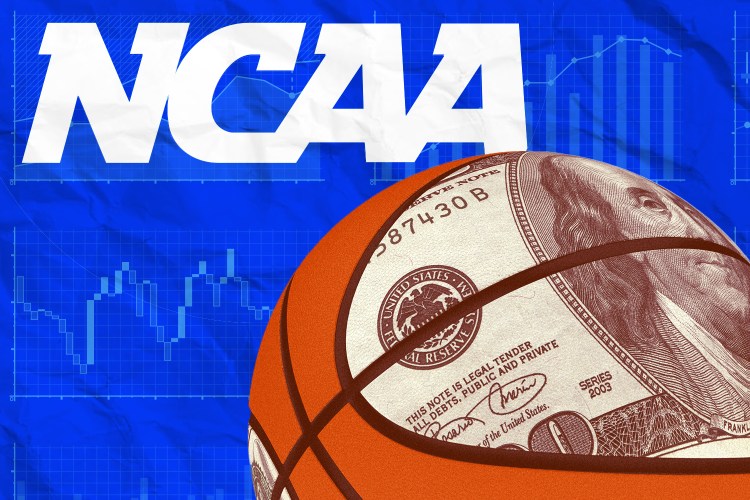As the end of the 1970’s approached, college basketball sat on the proverbial launching pad. All it needed was a spark. That arrived on March 26, 1979, when Michigan State, led by Magic Johnson, defeated Larry Bird’s undefeated Indiana State squad in the NCAA Tournament final in Salt Lake City. That game garnered a whopping 24.1 Nielsen rating, which is still the highest for any basketball game, college or pro, in history.
Blast-off.
The NCAA wisely capitalized on that burst of energy, expanding the tournament from 40 teams to 48 the following year. Three years later, the field grew again to 52. The year after that, it expanded to 53 and in 1985 it mushroomed to 64 teams.
It wasn’t until 2001 that a 65th team was added due to the creation of the Mountain West Conference. Ten years later, the NCAA tried to balloon the field to 96 teams while negotiating a new TV contract with CBS and Turner Sports. Instead, it settled on 68, where it stands today.
In other words, it has been 40 years the NCAA Tournament has undergone a significant expansion. Forty years. The time has come for the tournament to expand again.
But will it?
That is a question of deep public interest as the 2025 NCAA Tournament approaches. The men’s basketball committee will reveal its top 16 seeds on CBS’ annual bracket preview show on Saturday at 12:30 p.m. ET. The committee met this week in Indianapolis to seed those teams but also to address other matters. Expansion was one of them, but the topic was not discussed for long. Though it has been an agenda item for every committee meeting the last couple of years, it remains unclear when a final verdict will be rendered. If expansion is going to be implemented in time for the 2026 NCAA Tournament, then that decision will have to be made in the next few months.
There is no doubt that momentum has been gathering towards NCAA Tournament expansion the last couple of years, but Dan Gavitt, the NCAA’s Vice President for Men’s Basketball, cautions that it is far from inevitable. “Some people have said that it feels like expansion is a fait accompli, but that’s not true,” Gavitt told Hoops HQ. “There’s still a possibility that after all this reviewing that the recommendation will be not to do it.”
One of the many complications the committee must wrestle with is the compressed calendar. The NCAA Tournament is preceded by conference tournaments, which are both lucrative and locked into long-term TV contracts. It is followed immediately by The Masters, which has been an important property for CBS since 1956. That’s why the models currently being floated center on adding four or eight teams as opposed to the ridiculous and unworkable 32 that was efforted in 2011. “I think there’s a real opportunity there to do something modest,” NCAA president Charlie Baker told Hoops HQ during an interview last fall. “Whatever we do here would have to be done within the frame that’s already available. Do I think it’s possible to come up with something where we could make this work? I think it certainly is possible. We’re working on it, but I don’t think you’re going to see dramatic expansion.”
That is good news, because the tournament doesn’t need to be expanded dramatically. Really, it doesn’t need to be expanded at all. It’s already a great event. But there are still some good reasons to do it.
Before I list those, let me mention a reason that is not among them — money. Many people assume this is all about chasing dollars, when in reality it might not make financial sense at all. For starters, NCAA Tournament revenue makes up less than five percent of athletic budgets at power conference schools. Expanding the field would barely make a dent in their bottom line. And there are substantial costs involved. More teams means more money spent on travel (the NCAA provides each team with a chartered aircraft unless it’s close enough to travel by bus), hotels, game operations and the like. And whatever the NCAA does to the men’s tournament, it must do for the women’s tournament as well.
The most challenging math revolves around the so-called units. Those are the payments (currently valued around $350,000) that each team earns for its conference for every game it plays in the tournament. The one thing everyone agrees upon is that reducing the value of those units is a non-starter. That means the NCAA has to convince its broadcast and corporate partners to cover the difference.

“As long as they don’t compromise the value of a unit, I think it’s a win for everybody,” one mid-major conference commissioner said. “But if you’re talking about the vast majority of the schools taking a large hit on that, I can’t support it because you’re compromising the revenue of athletic departments.”
Doing a little better than break-even is not reason enough to expand the tournament. Here are three other reasons to do it:
- There are a lot more good teams
In the four decades since the tournament was last expanded significantly, the number of teams in Division I has grown from 282 to 364. That means we’ve gone from 22.7 percent of teams making the tourney to 18.7 percent. Adding eight more would bring that to 22.9 percent, which is still lower than the 25 percent minimum recommended for all sports in January 2023 by the NCAA’s Division I Transformation Committee.
People who oppose expansion argue that it would dilute the field, devalue the regular season and admit too many mediocre teams. Those are the same arguments that have been made every time the field got bigger. That includes the O.G. expansion in 1975, when for the first time the tournament included teams that did not win their conference championships. That change was made largely in response to the 1974 ACC Tournament final, when No 1 N.C. State edged No. 4 Maryland 103-100 in overtime. N.C. State went on to win the national championship while Maryland was given an invitation to the NIT, which it turned down. The NCAA decided that teams like Maryland should still have a chance to win a national championship, but many of the sport’s leading voices were opposed to the change for the exact same reason people oppose it now.
This argument does not hold up against the parity that has overwhelmed the tournament the last 20 years. Between 1979 and 2005, only one double-digit seed (No. 11 LSU in 1986) made the Final Four. Since then, five double-digit seeds have done it. Before 2006, the 1996 UMass team was the only mid-major team to make the Final Four since Indiana State in 1979. Since then, George Mason, Wichita State, Butler, VCU, Gonzaga, Loyola Chicago, FAU and San Diego State have played their way to the final weekend.
In the first 32 years after the tournament expanded to 64 teams, a No. 16 never defeated a No. 1. It has now happened twice in the last seven years. In 2022, Saint Peter’s became the first No. 15 seed to reach the Elite Eight. The First Four has only been in existence for 12 years, yet two at-large teams that played in it (VCU in 2011 and UCLA in 2021) made the Final Four. I’m not talking about winning games — I’m talking about making the Final Four. If the NCAA added eight more teams, how long do you think it would take for one of the last eight at-large teams to do the same?
Then there’s the lament that the extra spots would be filled by teams from high-major conferences. No doubt that would be true for most of the spots — but not all. Expansion would also open up slots for quality mid-majors (think Indiana State last year) who have been unfairly squeezed out for too long. Those teams have proved time and again that not only do they deserve to play in the NCAA Tournament, but they also are capable of winning multiple games. No doubt expansion will be a gift to the big boys, but it will also give more Cinderellas a chance to dance.
- It would spice up Tuesday and Wednesday
Some of the best games over the last 12 years have happened during the First Four (especially the ones between the No. 16 seeds), but not many people are watching and fewer care. People like to chide that the “real” tournament doesn’t start until Thursday. They’re not right, but they’re completely wrong, either.
If you add eight teams, that means Tuesday and Wednesday would pack a lot more punch. One of the proposals floating around has 12 games taking place those first two days while 52 teams receive byes into the first round. That would draw a lot more eyeballs during the daytime, which would make people more likely to watch at night.

Who would play in those games? That is also under discussion. One of the models (which not surprisingly comes from power conference folks) has all of the lowest-seeded teams playing on Tuesday and Wednesday. That would mean most (if not all) of those teams will be automatic qualifiers from low-major conferences. Personally, I would rather see some at-large teams to continue playing on Tuesday and Wednesday — and I’m guessing the TV networks feel the same way — but moving the lowest-seeded teams to those first two days would put more money into their pockets because the winners would get two units instead of just one if they lost their first-round game.
However it plays out, expansion would make Tuesday and Wednesday far more compelling while still giving us full 16-game schedules to look forward to Thursday and Friday. That’s a heck of a way to launch a tournament.
- The power conferences want it
For those who believe that growing the field by four or eight teams would “ruin” the NCAA Tournament, I would recommend they consider a far more ruinous scenario — namely, the possibility that the power conferences will blow up March Madness and create a tournament of their own.
That is not as fanciful as many might think. Last month, Yahoo! Sports reported that early drafts of a proposal were being circulated that outline a scenario in which the Autonomy Four leagues (ACC, Big 12, Big Ten, SEC) would gain the ability to fully manage postseason tournaments. That has already been the case in football ever since the Supreme Court ruled in 1984 that the NCAA’s TV contracts were violating U.S. antitrust law. When the College Football Playoff was expanded to 12 teams, the Big Ten and SEC secured a 59 percent share of the media rights because they indicated a willingness to create their own playoff if they didn’t. That’s called leverage and like it or not, the A4 leagues (and especially the Big Ten and SEC) have all of it. And they want the NCAA Tournament to expand.
Yes, we all love the Cinderella stories, but don’t think for a second that a basketball tournament involving the A4 conferences (plus possibly the basketball-only Big East) wouldn’t be a highly valuable property. The athletic directors and especially the commissioners from those leagues have been the most vocal proponents of expansion, not because they will make a lot more money (they won’t), but because they want more of their teams to play in the tournament. If giving them four or eight more teams — especially when there are other legitimate reasons to do so — means preserving all the other things we love about the tournament, then it is well worth the price.
Forty years is long enough. It’s time for the NCAA Tournament to expand again. If and when it happens, it will take some time for people to get used to the new look. Eventually, as is always the case with change, what’s new will feel old again. The NCAA Tournament is the greatest event in all of sports and adding a few more teams won’t change that. It might even make March Madness a little bit better.











